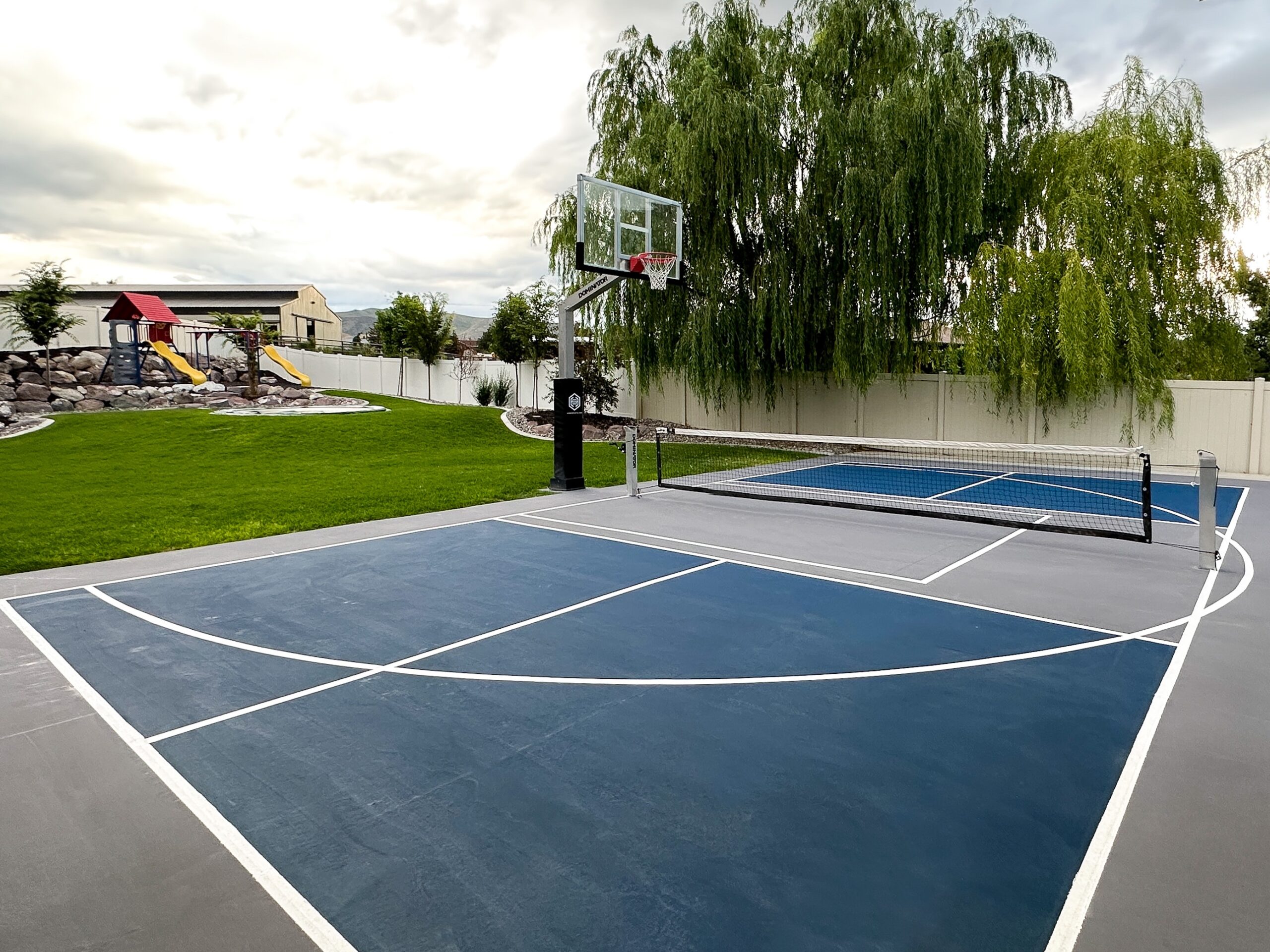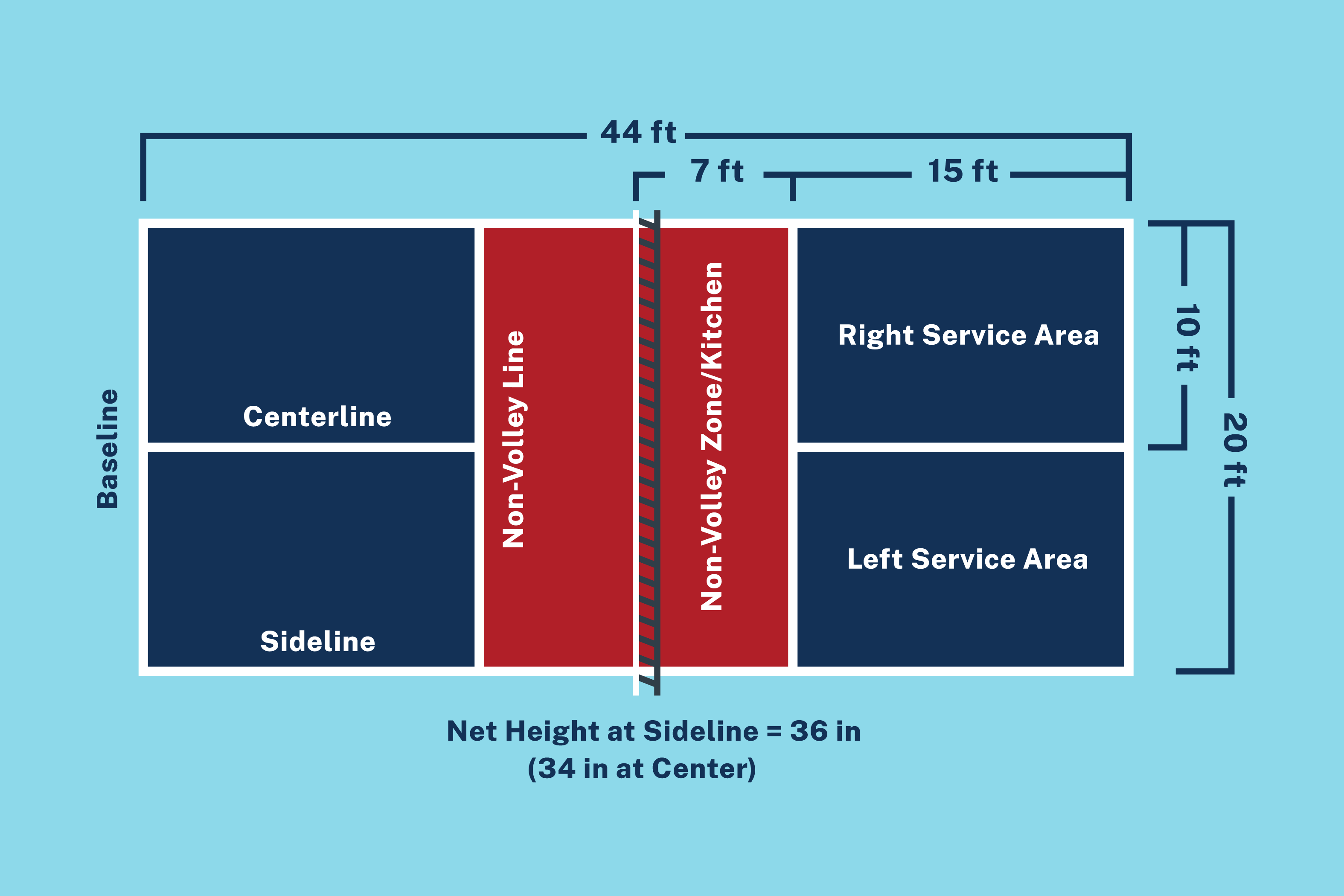The Essential Solutions Needed for Structure and Preserving High-Quality Pickleball Courts
The building and construction and upkeep of premium pickleball courts hinge on a series of important services that make certain optimum performance and gamer safety and security. Secret considerations consist of the choice of suitable surface products, adherence to standardized dimensions, and the execution of efficient water drainage systems. Furthermore, regular maintenance procedures and thoughtful interest to lighting and access are essential for promoting a comprehensive atmosphere. Understanding the interaction of these factors raises essential questions about best practices and long-lasting sustainability for pickleball centers, which warrant more exploration.

Choosing the Right Surface Products
Picking the appropriate surface materials for pickleball courts is important to ensuring ideal playability and safety. The option of surface area directly influences video game dynamics, player comfort, and injury avoidance. Usual products consist of asphalt, concrete, and specialized acrylic layers, each offering distinct advantages and considerations.
Asphalt is frequently preferred for its cost-effectiveness and sturdiness; nonetheless, it requires regular maintenance to stop splitting and surface area deterioration. Concrete deals a robust and durable choice, providing a smooth playing surface area that can endure heavy usage. It may necessitate added therapy to improve traction and lower trickiness.
Polymer layers have obtained appeal because of their capacity to improve efficiency features, such as shock absorption and traction, while likewise enabling personalization in shade and style. These finishes can be used over existing surface areas, making them a flexible alternative for court upgrades.
Inevitably, the option of surface area material must align with the planned usage of the court, budget restraints, and neighborhood climate conditions. Consulting with specialists who specialize in sports facility building can offer valuable insights, guaranteeing that the chosen materials meet both gamer needs and security criteria.
Appropriate Court Dimensions and Design

The web height is evaluated 36 inches at the sidelines and 34 inches in the center, which is crucial for preserving the stability of the video game. Additionally, the court should be surrounded by at the very least 3 feet of clear space on all sides, enabling safe motion and stopping accidents with surrounding obstacles.
Preferably, courts should be lined up north-south to minimize the effect of sun glare on gamers. By sticking to these requirements, center managers can ensure that their pickleball courts meet the needed criteria for both recreational and expert play.
Effective Drain Solutions
Reliable drainage solutions are crucial for maintaining the high quality and playability of pickleball courts, especially after inclement weather condition. Illinois and midwest. Appropriate drain systems protect against water accumulation on the court surface, which can bring about surface deterioration, mold and mildew growth, and safety risks during play
To attain reliable drain, it is vital to design the court with a minor slope, preferably around 1-2% away from the. Furthermore, incorporating a properly designed water drainage system, such as perforated pipes or French drains pipes, can further boost water administration.
The option of surface products also plays a vital duty in water drainage. Porous surface areas, like particular types of asphalt or specialized sporting activities surface areas, permit water to permeate, lowering the risk of standing water. On a regular basis getting rid of debris from gutters, drains, and bordering areas is essential to preserve optimum efficiency. By executing these efficient water drainage options, facility supervisors can make certain that pickleball courts stay usable and safe, consequently enhancing the general experience for explanation gamers and keeping the durability of the investment.
Normal Maintenance Practices
While the satisfaction of pickleball is often linked to the quality of the court, normal maintenance practices are necessary for maintaining its problem and making certain a secure playing environment. The very first step in maintenance involves regular evaluations to recognize any cracks, surface area wear, or debris that could influence gameplay.
Cleaning up the court consistently is essential, as this stops the build-up of dirt, leaves, and other products that can deteriorate the surface and create dangers. A stress washing machine or a mop can efficiently get rid of debris while guaranteeing that the court surface remains intact.
Additionally, periodic resurfacing is essential to maintain the court's having fun qualities and lengthen its life expectancy. This might entail applying a new layer of acrylic or sealer to shield versus wetness and UV damages.
Additionally, preserving the bordering locations, such as fences and webs, adds to the general security and looks of the facility. Establishing an upkeep routine that consists of these techniques will not only boost the having fun experience however also guard against pricey repair services in the future. Normal attention to these elements makes certain that pickleball courts continue to be a welcoming and secure setting for players of all ability levels.
Illumination and Accessibility Considerations
Proper illumination and access factors to consider are vital components in the design and upkeep of pickleball courts. Adequate lighting not just improves the playing experience but also makes sure safety for players and spectators during evening or low-light conditions. Courts ought to be brightened with top notch LED illumination, supplying uniform illumination while reducing glow. The positioning of fixtures need to be purposefully planned to prevent shadows and make sure clear visibility of the view it court boundaries and web.
Courts need to conform with the Americans with Disabilities Act (ADA) standards, making sure that they are easily accessible for individuals with wheelchair impairments. In addition, applying a smooth surface and guaranteeing that the bordering areas are cost-free of obstacles can assist in much better access.
Incorporating both lights and ease of access factors to consider not just improves the general customer experience yet likewise highlights the commitment to developing a comprehensive and inviting setting for all players. By focusing on these components, centers can promote a lively pickleball neighborhood that draws discover this in players of numerous skill levels and backgrounds.

Conclusion
To conclude, the facility and upkeep of high-quality pickleball courts demand a thorough strategy that consists of picking appropriate surface materials, sticking to typical dimensions, and carrying out efficient drainage systems. Regular maintenance and evaluations are crucial for long life, while appropriate lights and ease of access attributes advertise a secure and inclusive setting for players. Jointly, these vital solutions not just improve the playability and comfort of the courts however also add substantially to injury avoidance and overall fulfillment of individuals.